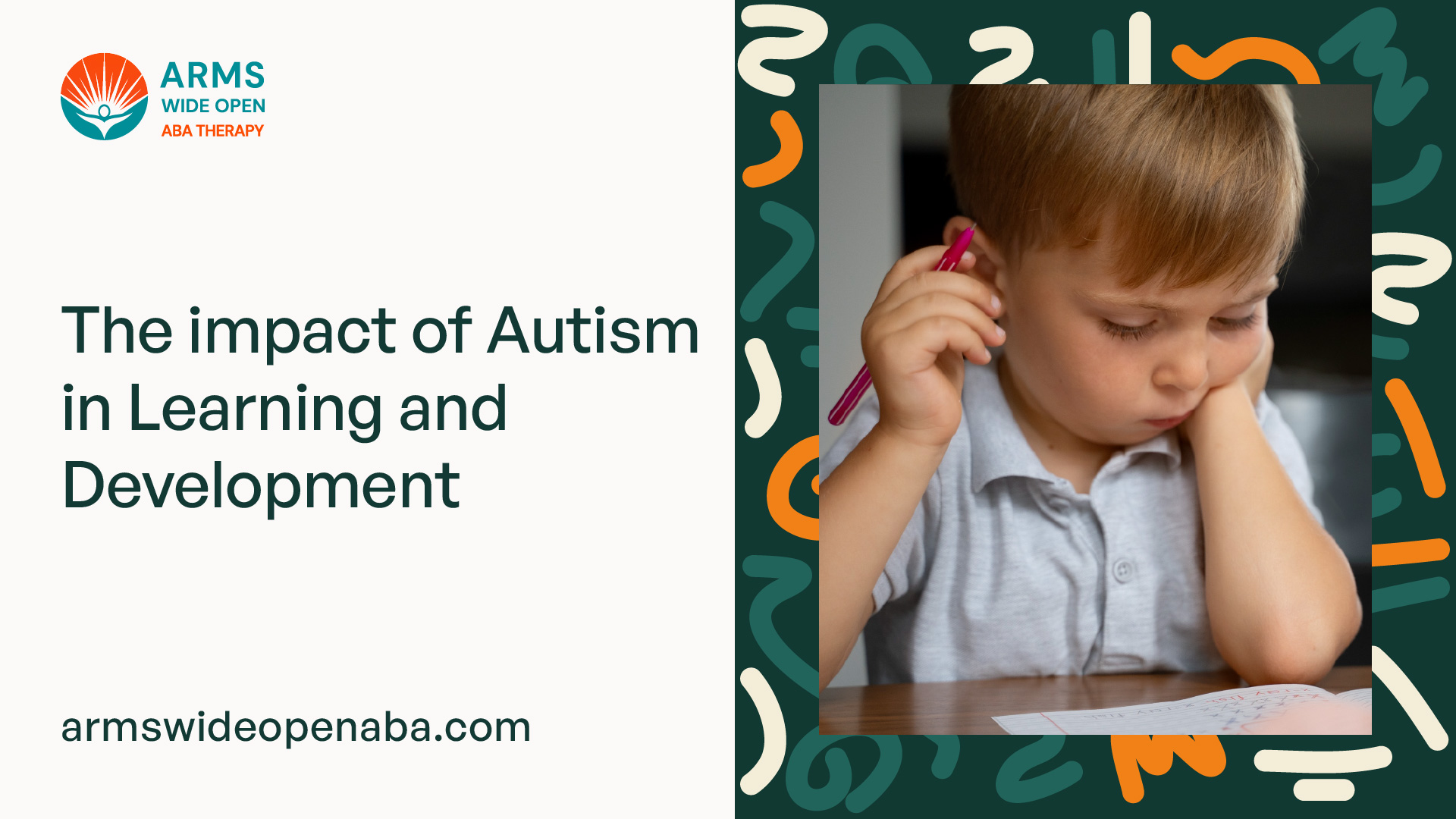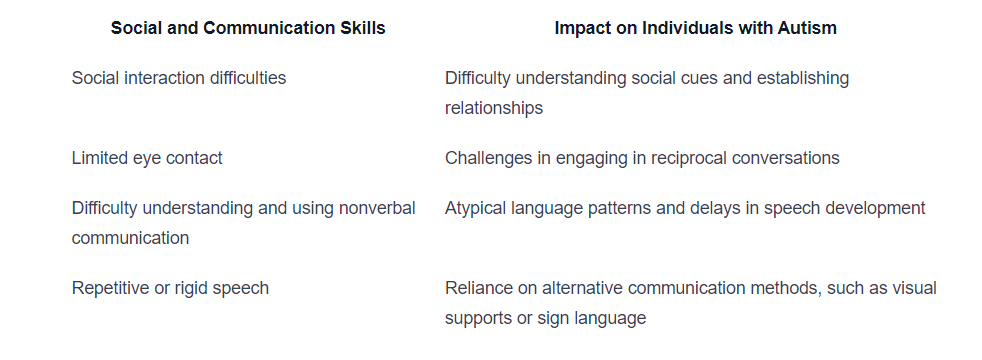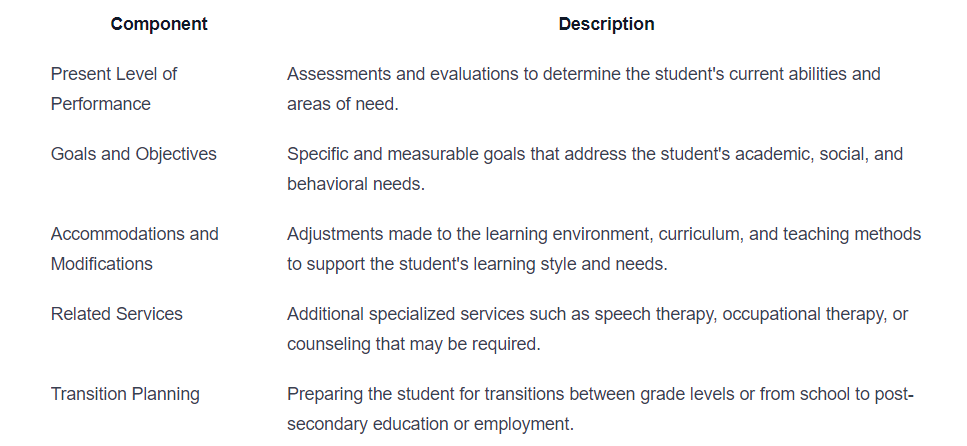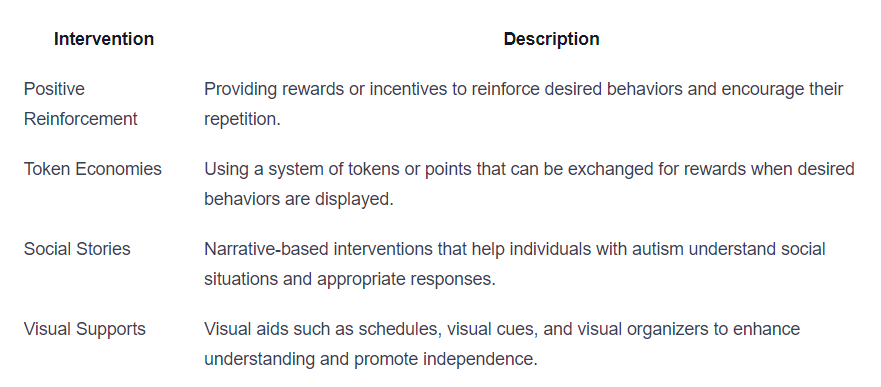The impact of Autism in Learning and Development
Unveiling the impact of autism on learning and development. Discover support strategies and the importance of inclusive education.

Understanding Autism
In order to grasp the impact of autism on learning and development, it is important to first have a clear understanding of what autism is and the common characteristics associated with it.

What is Autism?
Autism, also known as Autism Spectrum Disorder (ASD), is a complex neurological condition that affects individuals in varying ways. It is characterized by difficulties in social interaction, communication, and repetitive patterns of behavior. Autism is a lifelong condition that typically becomes apparent during early childhood.
Common Characteristics of Autism
While autism manifests differently in each individual, there are several common characteristics that are often associated with the condition. These characteristics can vary in severity and may include:
- Impaired social interaction: Individuals with autism may struggle with social cues, such as reading facial expressions and body language. They may also have difficulty forming and maintaining relationships.
- Challenges in communication: Language and communication difficulties are common in individuals with autism. Some individuals may have delayed language development, while others may have difficulty with expressive or receptive language skills.
- Repetitive behaviors and restricted interests: Many individuals with autism engage in repetitive behaviors or have intense interests in specific topics. These behaviors and interests often provide comfort and predictability in their daily lives.
- Sensory sensitivities: Individuals with autism may have heightened or diminished sensitivity to sensory stimuli, such as sounds, lights, textures, or smells. These sensitivities can impact their ability to navigate and engage with their environment.
Understanding these common characteristics of autism is crucial in recognizing and supporting individuals with autism in their learning and development journeys. By providing a supportive and inclusive environment, educators, caregivers, and the community can help individuals with autism reach their full potential.
Impact on Learning
Autism can have a significant impact on learning, requiring tailored approaches and support in educational settings. In this section, we will explore the challenges that individuals with autism may face in traditional education settings, as well as their unique strengths and learning styles.
Challenges in Education Settings
Individuals with autism often encounter various challenges in traditional education settings. These challenges can include difficulties with social interactions, communication, and sensory processing. Here are some common areas of challenge:
Challenges in Education Settings
Limited social interactions and difficulty forming peer relationships
Communication deficits, such as difficulty with verbal and nonverbal communication
Sensory sensitivities that can affect focus and attention
Executive functioning difficulties, such as organization and time management
Difficulty with transitions and changes in routine
Need for structure and predictability in the learning environment
It's important for educators and support staff to be aware of these challenges and make appropriate accommodations to create an inclusive and supportive learning environment for individuals with autism.
Strengths and Learning Styles
While individuals with autism may face challenges in certain areas, they also possess unique strengths and learning styles that can be leveraged to support their education. Some of these strengths and learning styles include:
Strengths and Learning Styles
Attention to detail and strong visual processing skills
Ability to focus intensely on specific interests or topics
Excellent memory and recall abilities
Logical and analytical thinking
Strong problem-solving skills
Preference for structured and predictable learning environments
By understanding and incorporating these strengths and learning styles into educational practices, educators can tap into the potential of individuals with autism and optimize their learning experiences.
To effectively support individuals with autism in their educational journey, it is crucial to implement individualized education plans (IEPs), provide behavioral interventions, and offer various therapies and interventions tailored to their specific needs. Additionally, fostering inclusive practices and creating supportive environments are essential for promoting the learning and development of individuals with autism. Through advocacy, awareness, research, and innovation, we can continue to enhance understanding and acceptance, ultimately ensuring that individuals with autism receive the education they deserve.
Impact on Development
Autism has a significant impact on various aspects of development, including social and communication skills, as well as behavioral patterns and sensory processing.
Social and Communication Skills
Individuals with autism often face challenges in social interactions and communication. They may struggle with understanding and appropriately responding to social cues, such as facial expressions and body language. This can make it difficult for them to establish and maintain relationships with peers and adults.
Communication difficulties are also common among individuals with autism. They may have delayed speech development or exhibit atypical language patterns, such as repetitive speech or difficulty initiating and sustaining conversations. Some individuals with autism may rely on alternative communication methods, such as sign language or visual supports, to enhance their communication skills.
To better understand the impact of autism on social and communication skills, let's take a look at some key characteristics:

Behavioral Patterns and Sensory Processing
Behavioral patterns and sensory processing can also be affected by autism. Individuals with autism may display repetitive behaviors or engage in restricted interests. These behaviors can be a way for them to self-regulate and find comfort in their environment.
Sensory processing issues are common among individuals with autism as well. They may be hypersensitive or hyposensitive to sensory stimuli, such as sound, touch, or light. This heightened or reduced sensitivity can lead to sensory overload or sensory-seeking behaviors.
Understanding the impact of autism on behavioral patterns and sensory processing involves recognizing the following characteristics:

Recognizing and understanding these developmental impacts of autism is crucial in providing appropriate support and interventions. By focusing on individual strengths and implementing strategies that address specific challenges, we can create a more inclusive and supportive environment for individuals with autism.
Support Strategies
When it comes to supporting individuals with autism in their learning and development, various strategies are available to address their unique needs. These strategies aim to provide tailored support and create an inclusive and accommodating environment. Three key support strategies for individuals with autism are individualized education plans (IEPs), behavioral interventions, and therapies and interventions.
Individualized Education Plans (IEPs)
Individualized Education Plans (IEPs) are comprehensive plans developed in collaboration with educators, parents, and other professionals to meet the specific educational needs of students with autism. IEPs outline goals, accommodations, and specialized services required to support the student's learning and development.
Key components of an IEP may include:

IEPs play a vital role in ensuring that students with autism receive the necessary support and accommodations to thrive in their educational journey.
Behavioral Interventions
Behavioral interventions focus on addressing challenging behaviors and promoting adaptive skills in individuals with autism. These interventions are based on the principles of Applied Behavior Analysis (ABA) and aim to reduce problem behaviors while teaching and reinforcing positive behaviors.
Behavioral interventions involve:

These interventions are tailored to the individual's needs and are implemented under the guidance of trained professionals to foster positive behavioral change and skill development.
Therapies and Interventions
Various therapies and interventions can be beneficial in supporting the learning and development of individuals with autism. These therapies are designed to address specific areas of need, such as communication, social skills, and sensory processing.

These therapies and interventions are often provided by trained professionals who specialize in working with individuals with autism. They play a crucial role in promoting skill development, enhancing communication, and improving overall functioning.
By utilizing these support strategies, individuals with autism can receive the necessary assistance to overcome challenges and reach their full potential in both their learning and development journeys.
Inclusive Education
Inclusive education plays a vital role in supporting individuals with autism in their learning and development journey. By embracing inclusive practices and creating supportive environments, we can ensure that individuals with autism have equal access to education and thrive academically, socially, and emotionally.
Importance of Inclusive Practices
Inclusive practices in education are essential to promote the inclusion and participation of students with autism. Inclusive education recognizes and values the diverse needs and abilities of all learners, including those with autism. It focuses on creating an environment where every student feels valued, accepted, and supported.
By implementing inclusive practices, students with autism can benefit from:
- Equal Opportunities: Inclusive practices ensure that students with autism have the same opportunities as their neurotypical peers to access quality education and reach their full potential.
- Socialization and Peer Interaction: Inclusive classrooms provide opportunities for students with autism to interact and build relationships with their peers, fostering social skills and promoting a sense of belonging.
- Diverse Learning Styles: Inclusive education recognizes and accommodates different learning styles, allowing students with autism to engage in learning in ways that suit their individual strengths and needs.
Creating Supportive Environments
Creating supportive environments is a crucial aspect of inclusive education for individuals with autism. Supportive environments consider the unique sensory, social, and emotional needs of students with autism, enabling them to thrive and succeed in their educational journey.
Here are some strategies for creating supportive environments:
- Visual Supports: Visual aids, such as schedules, charts, and visual cues, can help individuals with autism understand expectations, routines, and transitions, promoting a sense of predictability and reducing anxiety.
- Sensory-Friendly Spaces: Sensory-friendly classrooms take into account the sensory sensitivities of individuals with autism. Providing a calm and organized environment with appropriate lighting, minimal noise, and sensory tools can help individuals with autism stay focused and engaged.
- Individualized Support: Recognizing that each student with autism is unique, individualized support is crucial. This can involve collaborating with special education professionals, implementing personalized learning plans, and providing targeted interventions to address specific needs.
- Positive Behavior Support: Creating a positive behavior support system helps individuals with autism understand expectations and learn appropriate behaviors. This involves using positive reinforcement, clear expectations, and proactive strategies to prevent challenging behaviors.
By implementing inclusive practices and creating supportive environments, we can ensure that individuals with autism receive the necessary support and resources they need to thrive in their educational journey. Inclusive education not only benefits students with autism but also fosters a more accepting and diverse learning environment for all students.
Moving Forward
As we continue to learn more about autism and its impact on learning and development, it is essential to focus on various aspects to create a more inclusive and supportive society. Advocacy and awareness, research and innovation, and promoting acceptance and understanding play crucial roles in moving forward.
Advocacy and Awareness
Advocacy and raising awareness are vital in ensuring that individuals with autism receive the support and resources they need. By advocating for their rights and needs, we can work towards creating inclusive environments that foster their growth and development. This includes promoting policies and initiatives that address the unique challenges faced by individuals with autism and their families.
Raising awareness about autism helps to dispel misconceptions and reduce stigma. It encourages acceptance and understanding within communities, schools, and workplaces. By educating the general public about autism, we can foster a more inclusive society that values and respects the contributions of individuals with autism.
Research and Innovation
Ongoing research and innovation are essential in gaining a deeper understanding of autism and developing effective interventions and strategies. By investing in research, we can uncover new insights into the causes, characteristics, and potential treatments for autism.
Research also helps in identifying evidence-based practices that support the learning and development of individuals with autism. By studying different approaches and interventions, we can refine and enhance existing strategies, ultimately improving outcomes for individuals on the autism spectrum.
Promoting Acceptance and Understanding
Promoting acceptance and understanding is crucial for creating a society that embraces neurodiversity. It involves challenging stereotypes and fostering an environment where individuals with autism are valued and included. Acceptance means recognizing and appreciating the unique strengths and abilities that individuals with autism bring to the table.
Promoting understanding involves educating the community about autism and its impact on learning and development. By providing accurate information and dispelling misconceptions, we can foster empathy and support for individuals with autism. This can be achieved through awareness campaigns, educational programs, and community engagement initiatives.
By focusing on advocacy and awareness, research and innovation, and promoting acceptance and understanding, we can create a more inclusive society that supports the learning and development of individuals with autism. Working together, we can ensure that individuals on the autism spectrum have the opportunities and resources they need to thrive and reach their full potential.
Sources
https://www.crossrivertherapy.com/autism/how-autism-affects-learning
https://www.senploy.co.uk/blog/2021/4/19/the-impact-of-autism-in-learning-and-development
Similar articles
We’re here to help you

Our team is here to assist you in this process. Contact us for any assistance.
it’s easy to apply
We Accept Most Insurances
Our in-network insurance partnerships make ABA therapy more accessible to families throughout our service areas.







Our Insurance Process
We'll request your insurance details to help us verify your plan's coverage for ABA therapy. Once we've received this information, we'll walk you through your benefits, including copayments, deductibles and out-of-pocket maximums, so you know what to expect in advance.
Our team will then handle the preauthorization and all the necessary paperwork.
.svg)





















.jpeg)


































.jpeg)




.jpeg)







.jpeg)











.jpeg)
















